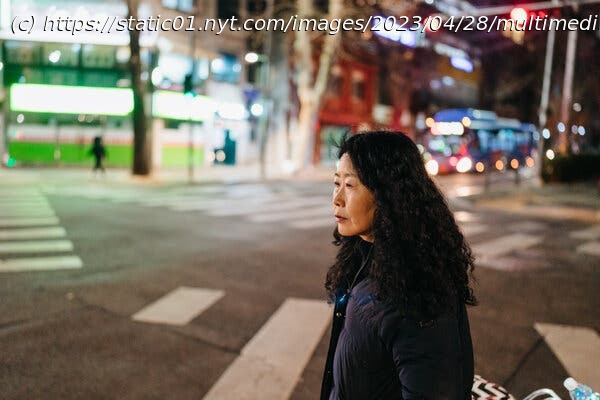The South Korean writer Hwang In-suk feeds stray cats on late-night walks through Seoul. The routine informs her poems about loneliness and impermanence.
Most nights, Hwang In-suk pushes a shopping cart up and down the steep alleys of her Seoul neighborhood, trailed by stray cats that emerge from shadows to greet her under glowing streetlamps and convenience store marquees.
Her neighbors tend to think of Ms. Hwang, 64, merely as someone who feeds cats in the street. Only a few know that she is a celebrated poet whose work explores loneliness and impermanence in the South Korean capital.
Her decades of writing span a time in which South Korea has cycled through a dizzying number of identities, including those of a country ruled by repressive military dictatorships, a fledgling democracy and, most recently, an economic power and international cultural juggernaut.
Ms. Hwang said her nocturnal cat-feeding routine allows her to quietly observe not only cats, her favorite muses, but also her changing neighborhood and the underclass of a megacity that is increasingly known for its flashy exterior.
“I’ve found worlds that I wouldn’t have found if I had not been feeding cats at night,” she said in a near whisper on a recent walk through her neighborhood, Haebangchon. The streets were mostly silent except for the occasional car, taxi or delivery truck.
In addition to cats and other subjects, Ms. Hwang’s poetry documents the milieu of convenience store clerks, street sweepers and other late-night workers. “I don’t even know his face as we meet only in the dark,” she writes of a newspaper deliveryman in a recent poem called “Don’t Know Where You Live”:
Haebangchon, or Liberation Village, lies near Seoul’s central train station and what was once the main U.S. military base in the country. The neighborhood was carved out of a hillside forest after the end of World War II, when Korea emerged from Japanese colonial rule.
Many of the people who settled there were North Korean refugees who arrived during or after the Korean War, said Pil Ho Kim, an expert on South Korean cultural history at Ohio State, whose father grew up in the neighborhood after fleeing the North.
In the decades after the war, South Korea experienced dramatic upheavals, including rapid industrialization, a presidential assassination and a massacre of pro-democracy demonstrators.






